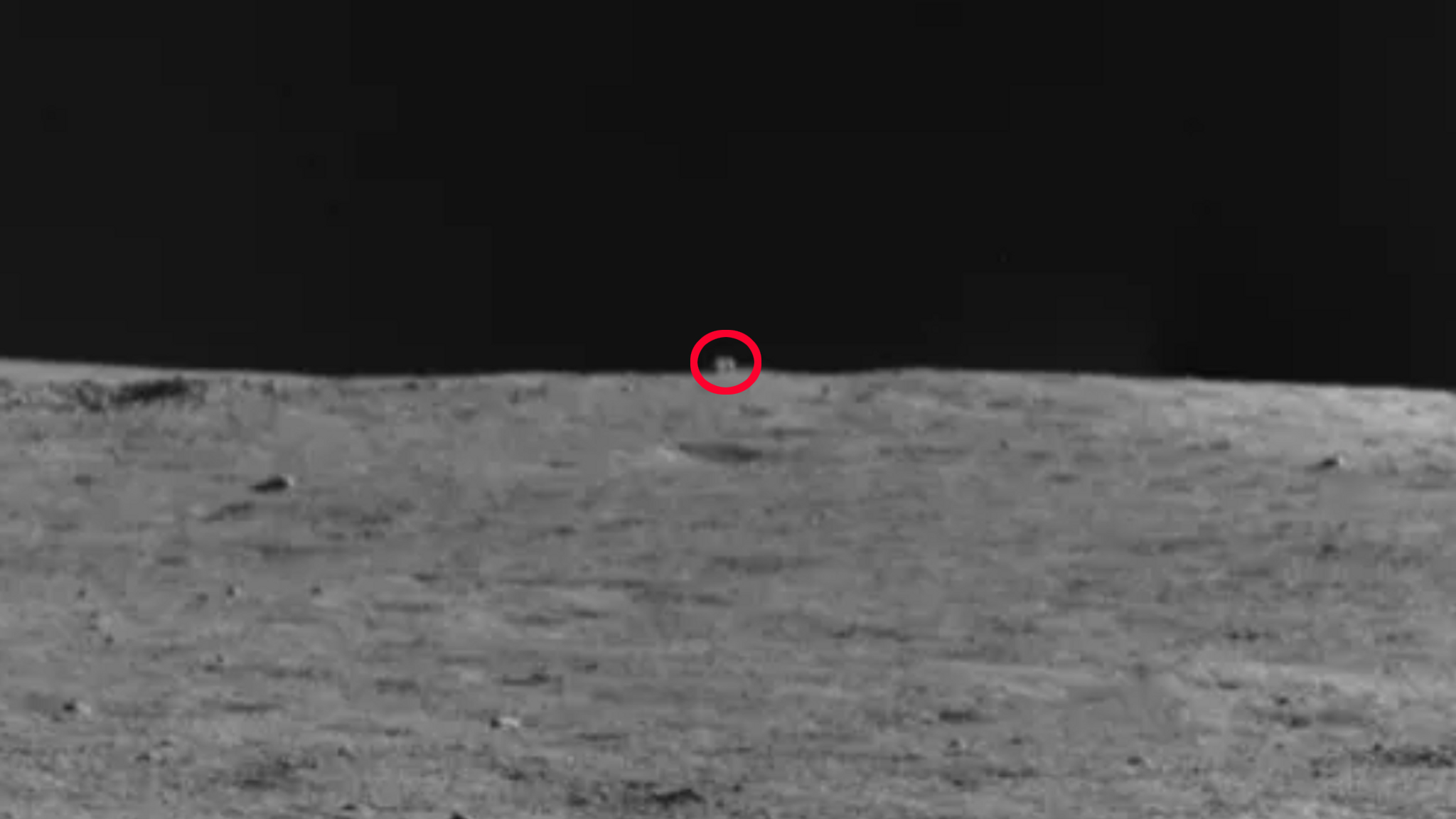China is investigating a 'mysterious hut' on the far side of the moon
The rover is now traveling to take a closer look.

China's Yutu 2 rover has spotted what Chinese researchers are calling a "mysterious hut" on the far side of the moon.
The rover, whose name means "jade rabbit" in Mandarin, recorded a blurry image of the cube-shaped object as the rover made its way across the moon's Von Kármán crater. Looking to the north on Oct. 29, the mission's 36th lunar day, the rover spotted the "mysterious hut" around 260 feet (80 meters) away, the China National Space Administration outreach program Our Space posted on the Chinese social network Weixin on Dec. 3.
The strange irregularity in the landscape was seen protruding above an otherwise uniform and unremarkable horizon, and there was a small impact crater next to it, Our Space researchers wrote in the statement.
Related: 5 strange, cool things we've recently learned About the Moon
"Was it a home built by aliens after the crash landing?" Our Space researchers joked. "Or is it the pioneer spacecraft of the predecessors to explore the moon?"
But those expecting an extraterrestrial encounter with one of the mysterious alien monoliths from Stanley Kubrick's "2001: A Space Odyssey" will be disappointed. The most likely explanation is rather boring: The mysterious object is probably one of the moon's many large boulders, which was possibly lifted from underneath the lunar surface by an impact event.
The scientists won't know for certain, however, until the rover traverses the gap and gets a closer look, which they expect will take two to three months. This may sound like a snail's pace, but the journey will take Yutu 2 across rocky terrain and through two to three lunar days and nights — forcing the rover to shut down both when the sun is directly overhead, to avoid overheating, and when there is no light, to prevent it from running out of charge.
Get the world’s most fascinating discoveries delivered straight to your inbox.
The rover was launched from China's Chang'e 4 lunar lander after it successfully completed the first-ever soft landing on the far side of the moon, in January 2019. Trundling across the 115-mile-wide (186 kilometers) Von Kármán crater, the rover has been carefully exploring the far side of the moon for 37 lunar days. During that time, the rover has taken a detailed scan beneath the moon's surface and even spotted a mysterious "gel-like" substance, which scientists think is lunar rock melted into glass by the energy of an asteroid impact.
Chang'e 4 is China's fourth mission to the moon and its second to land a rover on the lunar surface. China also landed its Zhurong rover on Mars this year and is currently building the Tiangong space station, which is set for completion by the end of 2022. China has also declared that it will establish a lunar research station on the moon's south pole by 2029.
Originally published on Live Science.

Ben Turner is a U.K. based writer and editor at Live Science. He covers physics and astronomy, tech and climate change. He graduated from University College London with a degree in particle physics before training as a journalist. When he's not writing, Ben enjoys reading literature, playing the guitar and embarrassing himself with chess.


